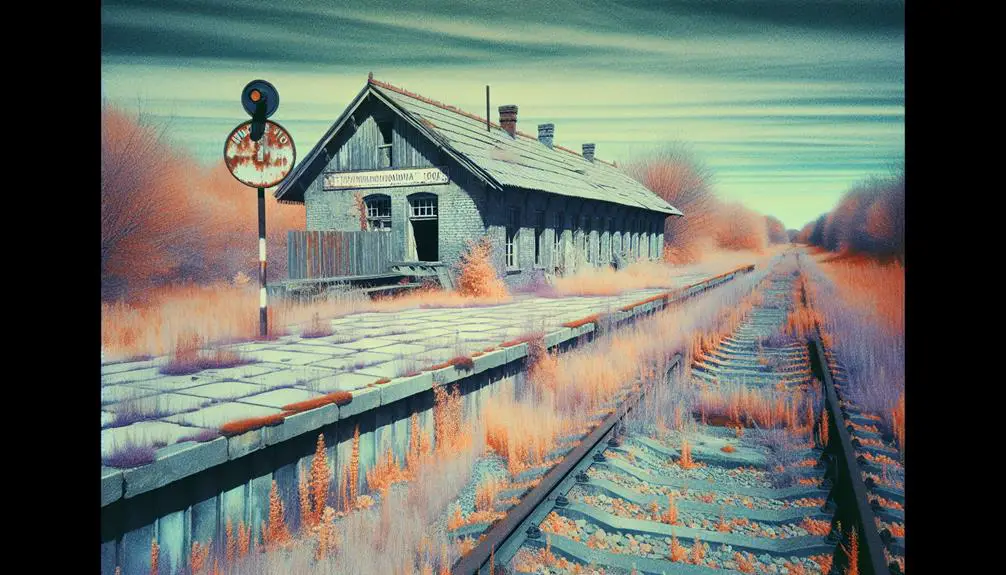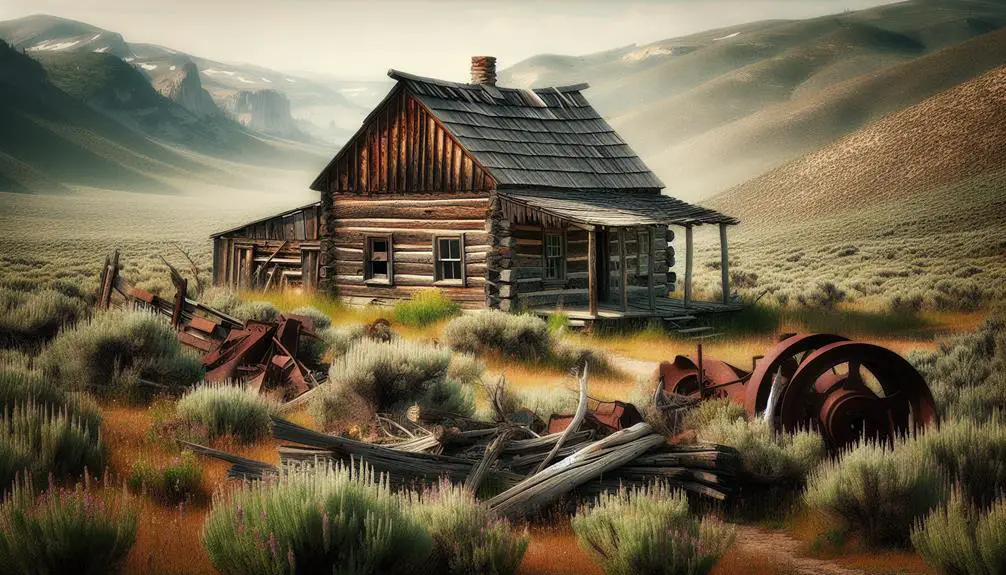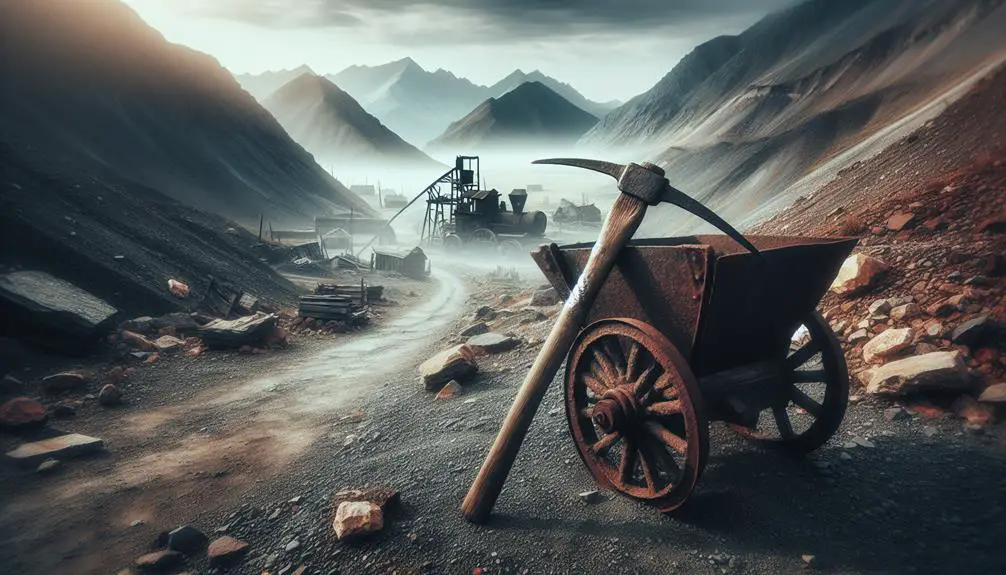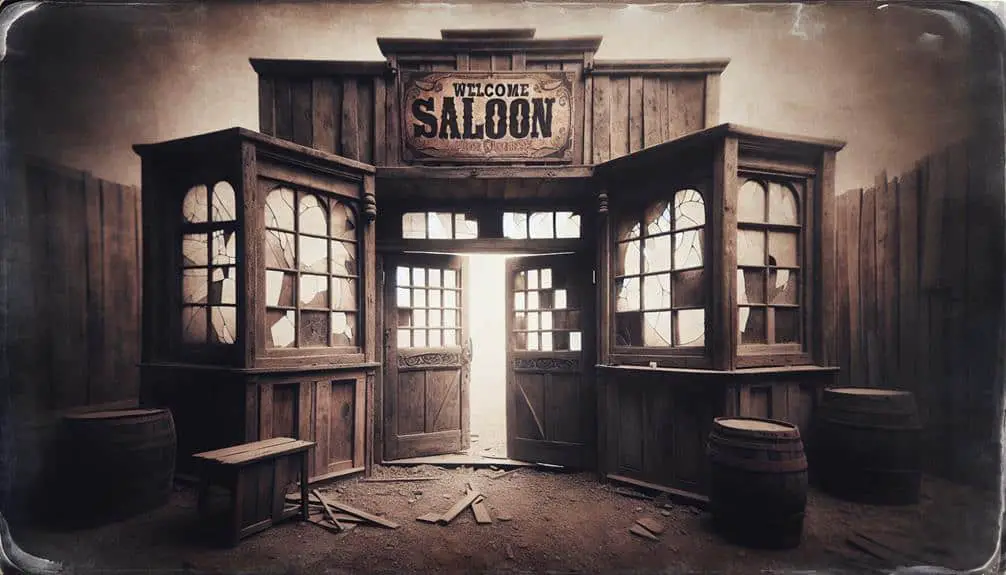Uncovering America's lost railroad towns involves studying historical records, conducting archaeological digs for artifacts, and analyzing old maps and photographs. By piecing together these clues, you can decipher the vibrant history hidden within these abandoned settlements. Each revelation provides a unique glimpse into the lives of past residents and the development of these once-thriving communities. These three tips serve as the foundation for unraveling the mysteries of America's forgotten railroad towns, offering a fascinating look into the past waiting to be rediscovered.
Key Points
- Conduct archaeological digs to unearth artifacts and insights into daily life.
- Utilize historical records to trace the development and decline of railroad towns.
- Study old maps, newspapers, and photographs for a deeper understanding.
- Explore abandoned railroad towns to discover rich history and untold stories.
- Preserve ghost towns through documentation, virtual tours, and responsible tourism.
Researching Abandoned Railroad Towns
When delving into the exploration of abandoned railroad towns, uncovering their rich history and untold stories becomes a fascinating journey of unraveling the past. Through archaeological digs and delving into historical records, you have the opportunity to piece together the lives of those who once inhabited these forgotten settlements.
Archaeological digs offer a hands-on approach to unearthing artifacts that provide valuable insights into the daily lives of the residents. By carefully sifting through the remnants of these towns, you can uncover tools, household items, and personal belongings that paint a vivid picture of the community that once thrived there.
In addition to physical excavations, delving into historical records allows you to trace the development and eventual decline of these railroad towns. By studying old maps, newspapers, photographs, and official documents, you can gain a deeper understanding of the economic, social, and cultural factors that shaped these settlements.
Exploring Forgotten Frontier Settlements
Begin on a journey of exploration as you plunge into the investigation of forgotten frontier settlements, uncovering the remnants of a bygone era waiting to reveal their secrets. When delving into these lost towns, you'll encounter a treasure trove of historic landmarks that paint a vivid picture of the past. The allure of urban exploration beckons you to wander through the deserted streets, imagining the bustling life that once thrived in these now-silent corners of the country.
As you navigate through these forgotten frontier settlements, keep an eye out for architectural wonders that stand as attestations to a different time. The intricate details of old buildings and structures offer clues to the lives of those who inhabited these spaces long ago. Each step you take unearths a piece of history, allowing you to piece together the puzzle of these ghost towns.
In your quest for exploration, approach these sites with a sense of reverence and curiosity, for they hold stories waiting to be discovered. Embrace the freedom to roam and immerse yourself in the rich tapestry of America's lost frontier settlements.
Preserving United States Ghost Towns
How can the essence of United States ghost towns be safeguarded for future generations to explore and understand their historical significance? Preserving these abandoned settlements requires a delicate balance between urban exploration and historical preservation. To achieve this, it's essential to establish regulations that protect these sites from vandalism and looting while still allowing access for educational purposes.
One effective way to preserve ghost towns is through documentation. Detailed records, photographs, and historical accounts can help capture the essence of these towns before they fade away completely. Additionally, creating virtual tours or interactive maps can provide a glimpse into the past for those unable to visit in person.
Furthermore, promoting responsible tourism can guarantee that these sites are respected and preserved for years to come. Encouraging visitors to leave no trace, respect property boundaries, and support local preservation efforts can help maintain the integrity of these historical treasures.
Frequently Asked Questions
What Are Some Common Challenges Faced When Trying to Locate and Research Abandoned Railroad Towns?
Traversing through the maze of abandoned railroad towns can feel like wandering through a dense forest without a map. Challenges faced include deciphering fading clues and boundaries determined by time's relentless march.
How Do Historians and Archaeologists Determine the Boundaries of Forgotten Frontier Settlements When Exploring These Areas?
When exploring forgotten frontier settlements, historians and archaeologists determine boundaries through meticulous mapping techniques. By analyzing archaeological evidence, they piece together the layout of these lost towns, shedding light on their historical significance and spatial organization.
Are There Any Legal Restrictions or Regulations in Place for Preserving United States Ghost Towns?
When it comes to preserving United States ghost towns, legal restrictions and preservation regulations play vital roles. Understanding the laws governing these areas guarantees that the historical significance and integrity of these sites are maintained.
What Are Some Lesser-Known Methods or Resources That Can Be Used to Uncover the History of Lost Railroad Towns?
To unearth the history of vanished railroad towns, you can investigate geographic mapping for clues and access oral histories for firsthand accounts. Delve into digital archives and perform cartographic analysis to assemble the past.
How Do Local Communities Typically Feel About Efforts to Preserve and Restore Ghost Towns in the United States?
You'll find that community support for preservation efforts varies widely. Some embrace the challenge, seeing it as a chance to honor their past. Others may resist change, fearing the loss of history or disruption to their lives.



